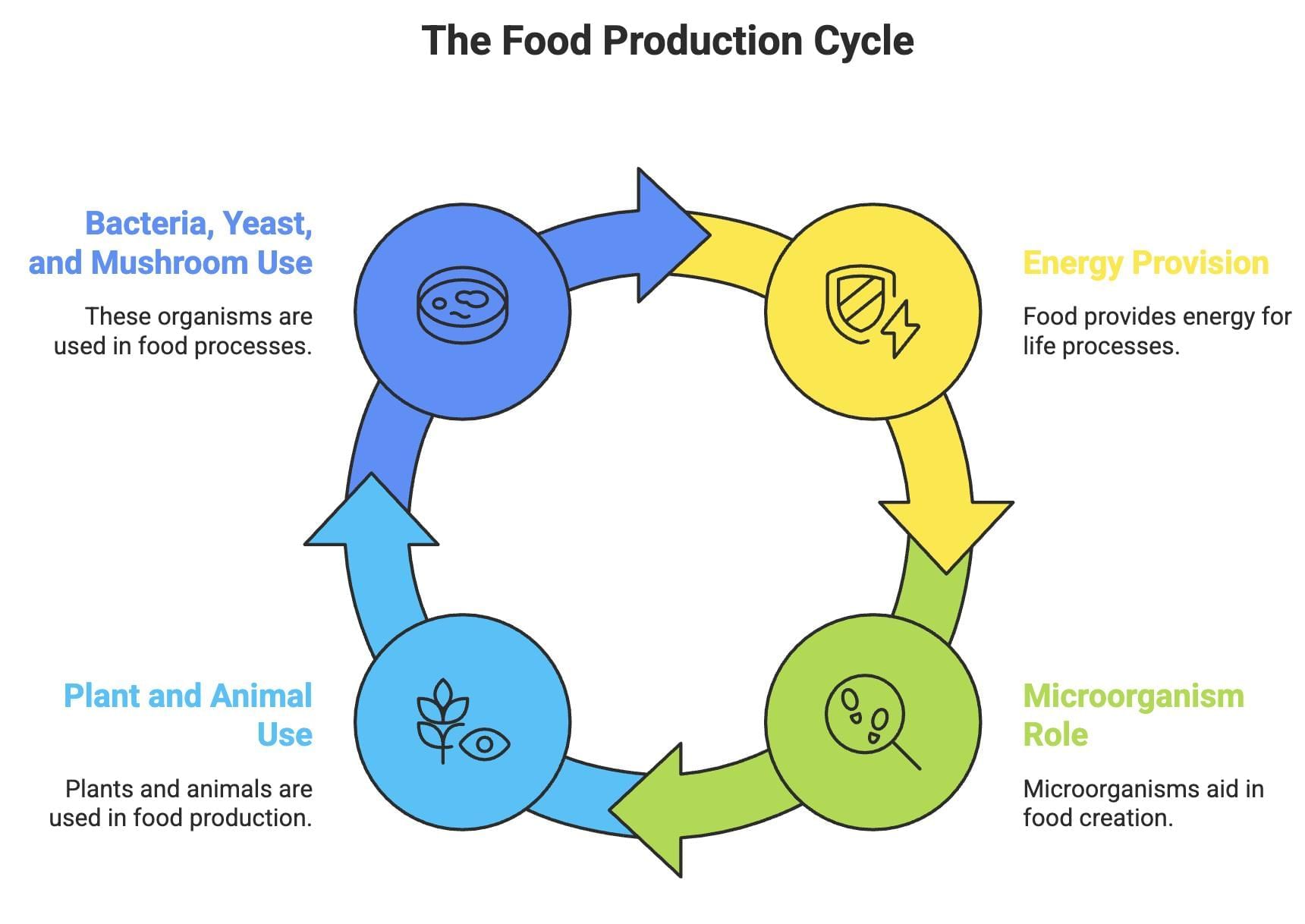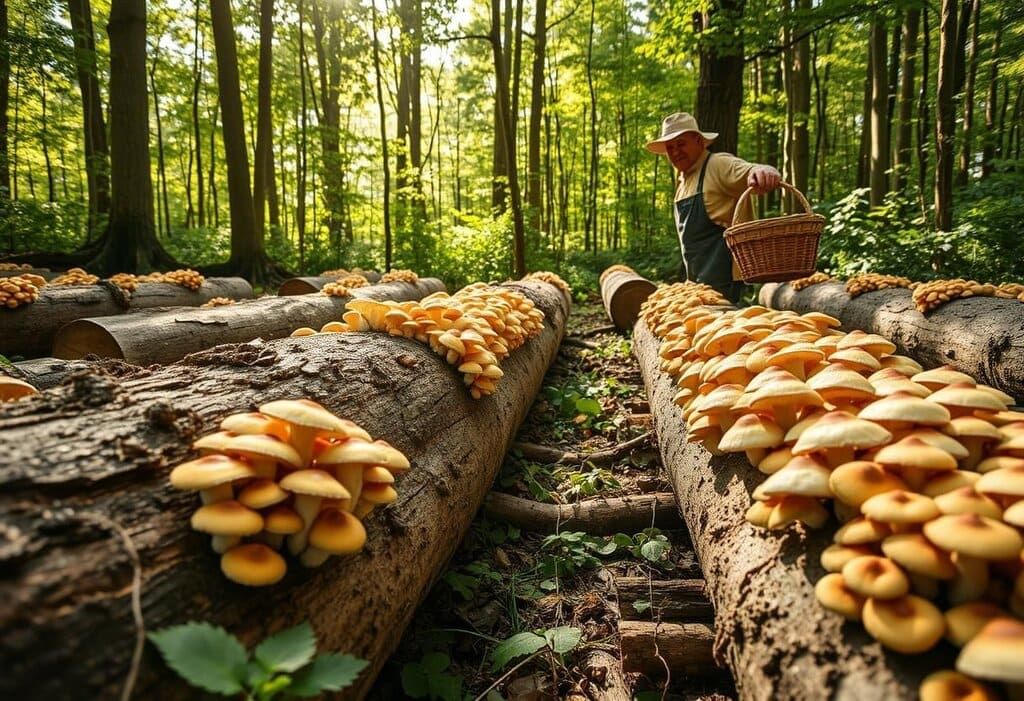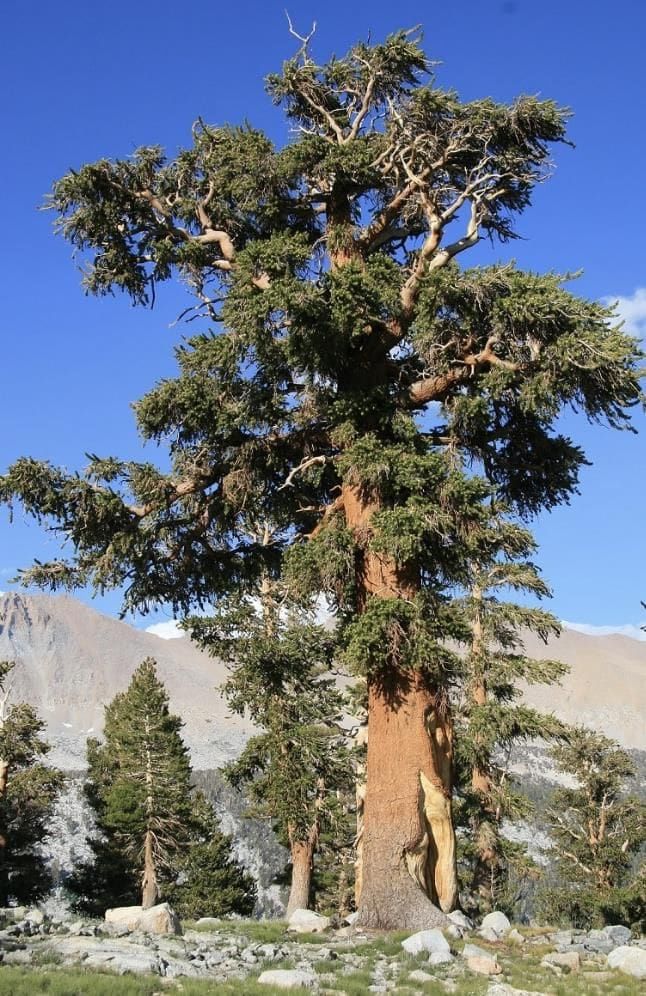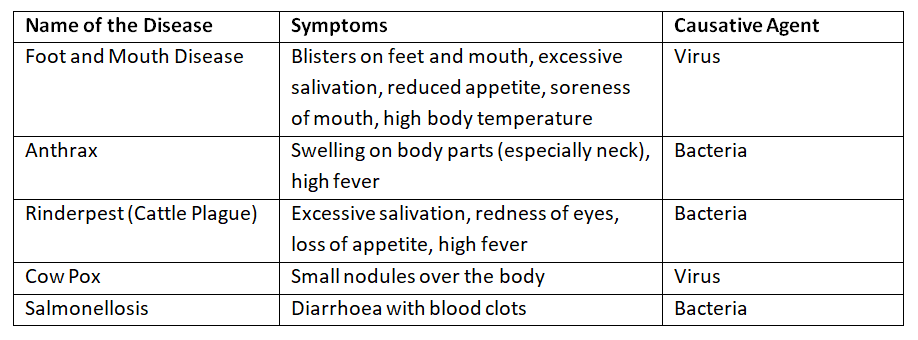Food Production Chapter Notes | Biology for Grade 10 PDF Download
Introduction
Food is very important for all living things, like humans, animals, and plants, because it gives them energy to live and grow. In this chapter, we will learn about how food is made using different methods. We will study microorganisms, which are tiny living things that help in making food, and how plants and animals are used to produce food. We will also learn about bacteria, yeast, and mushrooms, and how they are useful in food production. This chapter will help us understand the different ways food is grown and made for everyone.

Microorganisms
- Microorganisms are very tiny living things that we cannot see with our eyes; we need a microscope to see them.
- They can be unicellular (one cell) or multicellular (many cells).
- Examples of microorganisms are viruses, bacteria, algae, fungi, and protozoans.
- They are found everywhere, like in the air, water, soil, food (like milk, curd, vegetables, and fruits), and even inside our bodies.
- Some microorganisms cause diseases like cholera, malaria, dysentery, tetanus, and anthrax; these are harmful to us.
- Some microorganisms are helpful and used in many ways, like in making food or medicines.
Bacteria—general structure
- Bacteria can be both harmful and beneficial. While some bacteria can cause illness, many are actually very helpful in food production.
- Bacteria are tiny organisms that come in different shapes: rod-shaped (bacillus), round (coccus), and spiral (spirillum).
- Bacillus refers to rod-shaped bacteria, coccus to round-shaped ones, and spirillum to spiral-shaped bacteria.
- Because bacteria are so small, they can only be seen clearly under a microscope.
- Each bacterium has a strong outer wall called the cell wall, along with a slimy protective layer on the outside known as the capsule.
- Inside the cell wall, there is a thin layer called the cell membrane.
- Within the cell membrane, bacteria have a jelly-like substance called cytoplasm, which contains various small structures called organelles.
- Some bacteria also have a long, thread-like structure called a flagellum, which helps them move around.
Conditions for bacterial growth
- Bacteria flourish when they are provided with the appropriate food, water, and environmental conditions.
- They require suitable food, water, and the right temperature to thrive.
- Most bacteria prefer a neutral pH level, typically between 6.5 and 7.5, for optimal growth.
- The ideal temperature range for bacterial growth is between 25°C and 45°C. Some bacteria, like those found in hot springs, can grow at higher temperatures, such as 80°C, but their growth is slow at 0°C.
- Bacteria need oxygen to grow; while most bacteria thrive in oxygen-rich environments, some, known as facultative anaerobes, can grow without oxygen.
- Obligate anaerobes are a type of bacteria that cannot survive in the presence of oxygen.
Uses of bacteria in industries
Biotechnology uses bacteria to produce useful products.
- Curd Making: Curd is fermented milk made by bacteria like Lactobacillus bulgaricus, Lactobacillus acidophilus, and Streptococcus thermophilus. Bacteria convert milk sugar (lactose) into lactic acid, lowering pH and giving curd its tangy taste and thick texture. Curd is healthy, high in calcium, good for bones, and prevents osteoporosis. Available in many fruit flavours, popular among adults and children. Made from the milk of any dairy animal, usually cow’s milk. The traditional method uses a small amount of old curd as a starter to ferment new milk.
- Cheese Making: The process of cheese making involves several steps:
1. Curdling: Milk is curdled using Lactobacillus acidophilus, which separates the curd from whey.
2. Processing: The curd is processed to remove moisture, resulting in cottage cheese.
3. Salting: Salt is added to further remove moisture and prevent the growth of harmful microbes.
4. Ripening: The cheese is ripened under controlled temperature and humidity to enhance its flavour. - Nitrogen-Fixing Bacteria: Found in root nodules of leguminous plants (e.g., pea, gram, pulses). Convert free soil nitrogen into soluble nitrates, acting as natural fertilisers.
- Tanning: Bacteria help remove flesh from animal skins and hides, softening them for tanning.
- Retting: Bacteria separate fibres from stems of plants like jute, flax, and hemp.
- Decomposition of Hydrocarbons: Bacteria like Pseudomonas break down hydrocarbons in oil spills in water bodies.
- Sewage Disposal: Bacteria degrade organic matter, producing biogas from human and animal waste for cooking.
- Nutrition: Bacteria in human intestines synthesise B vitamins. In herbivorous animals (e.g., cows, buffalo), bacteria help digest cellulose.
Fungi
Fungi can be single-celled or multicelled, lack chlorophyll, and cannot make their own food. Live on dead and decaying matter, called saprophytes (natural cleaners).
Examples of Fungi:
- Bread Mould: This is the dark, fuzzy growth that you might see on stale bread. It is a common type of fungus that thrives on decaying organic material.
- Mushrooms: These are the familiar umbrella-shaped fungi that often grow on decaying wood or rubbish. They are a vital part of the ecosystem, breaking down organic matter and returning nutrients to the soil.
Mushroom Cultivation
Mushrooms vary in shape and size; some have a cap and stalk, others lack a stalk. Many wild mushrooms are poisonous; edible ones like Agaricus bisporus (button mushroom) are widely eaten. Common cultivated mushrooms in India: White button mushroom (Agaricus bisporus), Paddy straw mushroom (Volvariella), Oyster mushroom (Pleurotus). Grown indoors, requiring little land, using compost from agricultural wastes.
 Mushroom Farming
Mushroom Farming
Steps for Button Mushroom Cultivation:
- Composting: Mix wheat/paddy straw, chicken manure, organic/inorganic fertilisers; keep at 50°C for a week.
- Spawning: Add mushroom seed (mycelium) to compost, let it spread for a few days.
- Casing: Spread a thin soil layer over compost to support mushrooms, maintain humidity, prevent drying, and regulate temperature.
- Cropping and Harvesting: Mycelium grows in 2–6 weeks, forms tiny pinheads, then button stage, and finally marketable size; harvest full-grown mushrooms.
- Preservation: Mushrooms are perishable; preserve by vacuum cooling or gamma radiation, store at 15°C.
- Precautions: Ensure air circulation around beds. Maintain a low temperature (20–25°C) to prevent pests and diseases.
Yeast
Yeast is a single-celled fungus, usually spherical, in the genus Saccharomyces. Found in air, sugary solutions, and plant exudates (e.g., grapes, flower nectar, sugarcane juice).
- Structure: Ovoid shape, distinct cell wall, nucleus, and one or more vacuoles in cytoplasm.
- Nutrition: Absorbs simple sugars (glucose) directly; breaks down sucrose into simple sugars using enzymes.
- Respiration: Anaerobic (without oxygen), converts glucose to ethanol and carbon dioxide:

Reproduction:
- Asexual Reproduction: Yeast reproduces asexually through a process called budding. In this process, a small bud forms on the parent cell and eventually detaches to become an independent yeast cell.
- Sexual Reproduction: Yeast can also reproduce sexually through a process known as conjugation. During conjugation, two yeast cells fuse together, and their contents divide to form four spores. These spores can germinate under suitable conditions to form new yeast cells.
Economic Importance of Yeast
Yeast is vital for alcoholic fermentation, producing ethanol for beverages.
Making Alcohol:
- Wine: Made from grape juice containing sugar and wild yeast; yeast ferments sugar into alcohol over 4000 years of practice; flavour depends on grape type and fermentation conditions.
- In the tropics, wine is made from palm sap; homemade wine uses plants like turnips.
- Fermentation in warm conditions with a valve to release CO₂ and prevent bacterial contamination (which turns alcohol into vinegar).
- Beer: Made from barley; grains are mashed with water, boiled with hops for flavour, then fermented with yeast to convert malt sugar into alcohol.
- Alcohol above 13–14% kills yeast, so stronger drinks (whisky, gin, rum) are made by distilling fermented liquid.
Making Bread:
- Mix flour, water, sugar, and yeast to make dough.
- Yeast ferments sugar, producing CO₂, which makes dough rise in a warm place.
- Baking kills yeast, evaporates alcohol, and forms a crisp loaf.
Agriculture - Primary Food Source
Agriculture is the science of growing food and other useful crops. Early humans ate wild berries, tapioca, yam, and herbs; later cultivated cereals, pulses, and oil seeds. Modern agriculture uses irrigation, fertilisers, better seeds, and plant protection for higher yields.
Types of Crops
- Food Crops: Grown for food, e.g., cereals, pulses, oil seeds.
- Cash Crops: Grown for commercial purposes, e.g., rubber, tea, coffee, spices.
- Crop Plants: Grown and harvested annually/seasonally for grains, roots, vegetables, and fruits.
Crops Grown in India
- Cereals: Rice, wheat, barley, maize.
- Pulses: Beans, gram, peas.
- Oil Crops: Groundnut, mustard, sunflower.
- Root Crops: Sweet potato, turnip, carrot, radish.
- Tuber Crops: Potato, tapioca.
- Sugar Crops: Sugarcane, beetroot.
- Plantation Crops: Coffee, tea, rubber, coconut.
- Fibre Crops: Cotton, jute.
Horticulture Crops
- Vegetables: Cabbage, cauliflower, spinach, and tomato.
- Fruits: Mango, grapes, apple, banana.
- Decorative Plants: Crotons, coleus, ferns, bougainvillaea.
- Decorative Flowers: Rose, gladiolus, sunflower, jasmine.
Food Crops
Kharif Crops (Autumn Crops)
- Growing Season: These crops are planted during the rainy season, typically from July to October.
- Major Crop: Rice is the most important kharif crop and covers the largest area in India.
- Temperature: Rice requires a temperature range of 16 to 20 degrees Celsius during growth and 18 to 32 degrees Celsius during ripening.
- Rainfall: It needs 150 to 200 centimetres of rainfall and thrives in flooded fields.
- Soil: Rice grows best in alluvial loam soil with clay subsoil, commonly found in river valleys, deltas, and hill slopes.
Cultivation Methods
- Broadcasting: In this method, seeds are spread evenly across the soil surface.
- Dibbling: Seeds are placed at regular intervals into furrows made by a plough.
- Drilling: Seeds are inserted into holes created by a bamboo shaft or iron tube fitted with a funnel.
- Transplantation: Seedlings are relocated from nurseries to ensure better survival rates.
To achieve high yields, it is essential to have a reliable water supply, nutrient-rich soil, appropriate fertilisers, high-quality seeds, and proper cultivation methods.
Rabi Crops (Winter Crops)
- Wheat is the main crop grown during the rabi season, usually in the loamy and alluvial soils of the northern plains.
- It is planted in October or early November, and winter rains are crucial for its growth.
- Wheat thrives in temperatures between 10–15°C and needs warm, sunny weather for ripening, along with 50–100 cm of rainfall.
- A small amount of rain just before harvest helps to plump up the grains.
- Soil: The best soil for wheat cultivation is clay loamy or black soil with some lime content.
- Cultivation Methods: Farmers use methods like broadcasting, dibbling, and drilling to sow the seeds, taking advantage of soil moisture after the rainy season. The grains start developing by January and ripen as the temperatures rise.
Categories of Plants Based on Life-Span
Annuals
- Complete life cycle in one year/season, e.g., wheat, rice, gram, beans, peas, sunflower, seasonal flowers, vegetables.
- Plant dies after seed formation, except seeds.
Biennials
- Live for two years/seasons, e.g., beetroot, radish, turnip, carrot (in temperate regions).
- First year: Vegetative growth; second year: Flowers, fruits, seeds.
- In tropical climates like India, they complete their cycle in one year.
Perennials
- Live for more than two years, bearing flowers and seeds yearly, e.g., rose, pine, mango, teak, guava.
- Some, like banyan, peepal, pine, live for hundreds or thousands of years (e.g., the Bodhi tree in Sri Lanka: over 2000 years; some pines in America: over 4000 years).
 An old Bristlecone Pine Tree in America
An old Bristlecone Pine Tree in America
Organic Farming
- Farmers avoid chemical fertilisers, pesticides, and weedicides due to harmful effects.
- Organic farming uses organic manure, crop rotation, hand weeding, mixed cropping, and biological pest control to maintain soil fertility and control weeds/pests.
Green Revolution
Agriculture employs 70% of India’s population, contributing 40% to Gross National Product (GNP). Modern agriculture uses irrigation, tractors, farm tools, pumps, fertilisers, weedicides, pesticides, and high-yielding seeds. Wheat production increased significantly in India over the last 30 years, known as the Green Revolution. Indian scientist M.S. Swaminathan played a key role in this revolution.
Cattle Feed
- Roughage: Coarse, fibrous, low-nutrient feed, e.g., hay (cereal straw), green fodder, silage, legumes (berseem, lucerne, cowpea).
- Concentrates: Nutrient-rich, low-fibre feed for lactating animals, high in carbohydrates, proteins, fats, minerals, and vitamins.
- Sources: Grains/seeds (bajra, maize, rye, jowar, barley) for carbohydrates; legume seeds for proteins; oil seeds (cotton) for fats. Oil cakes (cotton, mustard, groundnut) from oilseed remains. Rice bran, gram chaff, wheat bran, molasses.
Diseases of Cattle
Cattle suffer from diseases that need prevention, control, and treatment. Vaccination protects against many diseases.
Common Diseases:
- Other Diseases: Worms infecting the intestines and other organs.
- Symptoms of Sick Cattle:
- Stop feeding.
- Reduced milk yield.
- Inactive, tired appearance.
- Drooping lips and ears.
- Loose dung, colored urine.
- Feel hot or shiver.
Poultry
- Poultry farming produces eggs and meat with a small investment, quick returns, small space, and easy care.
- Types: Eggers/layers (for eggs), broilers (for meat).
- Breeds in India:
- Indigenous: Aseel (high meat yield, poor egg-layer).
- Exotic:
- White Leghorn: Small, needs less feed, produces oval white eggs, economical.
- Rhode Island Red: Dual-purpose (good egg-layer and meat provider).
- Cross Breeds: HH-260, IBL-80, B-77.
- Poultry Care:
- Keep birds in wire cages or sheds to protect them from predators (dogs, cats).
- Feed: Meshed cereals (bajra, maize, wheat, jowar, ragi), rice bran, groundnut cakes, fish meal (from meat processing waste).
- Poultry Diseases:
- Viral: Fowl pox, Ranikhet disease.
- Bacterial: Fowl cholera, Salmonellosis, diarrhoea of chick, Coryza.
- Fungal: Aspergillosis.
- Prevented by proper sanitation and immunisation.
Fish Farming
- Fish is a key food source, especially in coastal areas, rich in protein, easily digestible.
- Fish liver oil provides vitamins A and D.
- Aquaculture: Farming of aquatic animals (fish, prawns, lobsters, molluscs) in water bodies.
- Pisciculture: Farming and management of fish only.
- Freshwater Fish Culture: Fish eggs (seeds) are raised in hatcheries, and young fish are fed and harvested when grown.
- Marine Fisheries: Catching fish from the sea coasts or within the sea using boats.
- Edible Fish in India:
- Marine: Bombay duck, eel, hilsa, pomfret, salmon, sardine.
- Freshwater: Rohu, calbasu, catla, singhara, magur, singhi (found in rivers, ponds, lakes, canals).
Meat-Providing Livestock
- Main sources: Goats, sheep, pigs, poultry, fish.
- Goats:
- Provide meat and milk (good for children, the sick, elderly).
- Breeds: Gaddi, Kashmiri Pashmina, Marwari.
- Sheep:
- Provide mutton, wool, and skin.
- Breeding is cheap, common among landless labourers.
- Breeds: Nali, Deccani.
- Pigs:
- Contribute 5% of India’s meat, rich in protein, and low-cost.
- Meat: Pork (bacon, ham, sausages); lard (fat) used for cooking, soaps, lubricants, candles, grease.
- Stiff body hair is used for painting brushes.
- Breeds: Indigenous (Desi, Ghori), Exotic (Berkshire, Large White Yorkshire).
- Care of Sheep, Goats, Pigs:
- Sheep: No formal shelter, live under trees/hills.
- Goats: Need dry, safe shelter from heat and cold.
- Sheep feed: Green grass, weeds, and farm wastes.
- Goat feed: Leaves of various plants.
- For wool: Feed grass and foliage; for meat: Fatten with gram chaff, oil cakes, mineral mixtures.
- Pigs: Eat garbage, kitchen waste, vegetables, and grains; avoid human excreta to prevent infections.
- Diseases of Sheep and Goats:
- Viral: Sore mouth, goat pox, rinderpest.
- Bacterial: Black quarter, brucellosis, vibriosis.
- Prevented by sanitation and vaccination.
Sericulture
- Rearing silkworms for silk production.
- Indian silk varieties: Mulberry, tassar, eri, mugga.
- Silk is obtained from cocoons (pupa stage).
- Process: Boil cocoons to kill pupae, reel threads (criticised by environmentalists).
- Life Cycle of Silk Moth:
- The female lays eggs on leaves.
- Eggs hatch into caterpillars (larvae).
- Larvae form chrysalises (pupae) in cocoons.
- The adult moth emerges.
Apiculture
- Rearing honey bees for honey and other products.
- Species: Apis indica (Indian honey bee).
- Hive: 40–50,000 bees, including one queen (egg-layer), drones (males), workers (sterile females).
- Hive cells: Hexagonal, made of wax, store honey and pollen.
- Honey: Rich in carbohydrates (sugar, dextrose, levulose).
- Beeswax: Used for candles, polishes, and cosmetics.
|
110 videos|105 docs|15 tests
|
FAQs on Food Production Chapter Notes - Biology for Grade 10
| 1. What is the general structure of bacteria? |  |
| 2. How are bacteria utilized in various industries? |  |
| 3. What are fungi, and how do they differ from bacteria? |  |
| 4. What is the significance of mushrooms in food production? |  |
| 5. How do microorganisms contribute to food preservation? |  |
















